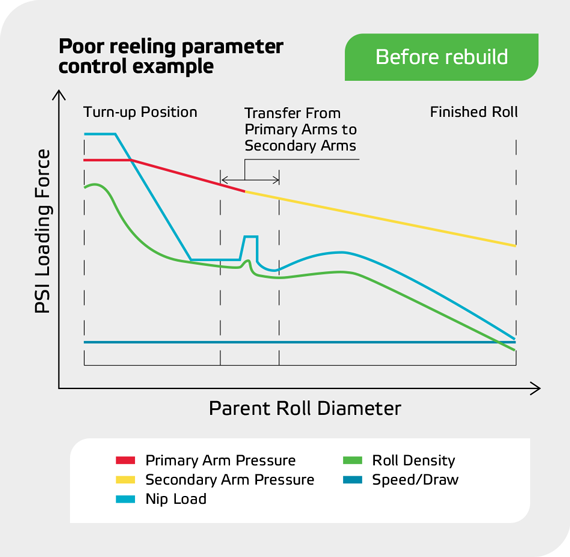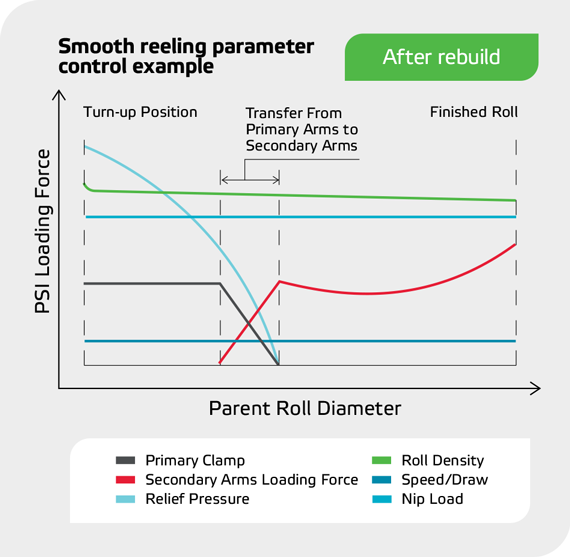Improving reel turnups for low downtime and high paper yield
The process of changing from a full reel of paper to the empty spool must be done flawlessly every time if downtime is to be low and paper yield high.
Basic reel types and turnup methods
Turnup equipment varies by machine. You have your workhorse Pope reel with primary and secondary arms. Pope reels can be equipped with primary arm nip relieving cylinders, air goosenecks, tape turnup systems, or water jet turnup systems. They can be hydraulic or pneumatic operated.
Then there are reels which have drives on both the primary and secondary arms. These types of reels have goosenecks, air showers, or full width cutting knives to break the sheet at turnup.
Requirements of a good turnup
- A successful turnup requires the new spool to be at the proper speed, normally the same as the reel drum speed or slightly higher.
- Next, there must be a good nip between the new spool and the reel drum. The nip load depends on the type of primary arms used. If the primary arms do not have nip relieving capabilities, the nip load will be high (~50-100 pli depending on spool size and weight). For nip relieving primary arms, the nip load is more like 15-30 pli, depending on grade.
- Next, the gooseneck pipe must be aligned properly to the drum and the cutting knife. Most goosenecks have side blows as well. As a rule of thumb, they need to point to the outside edge of the sheet. They help lift the sheet off the reel drum as it widens out.
Occasionally, the sheet will not widen out all the way to the edges. This can be caused by improper alignment of the primary arms to the reel drum, spool nip load profile issues, or a web that wants to tear easily in the machine direction (MD/CD tensile ratios too high). This phenomenon can be caused by too high of rush-drag, high fiber orientation, or headbox edge flow/header balance issues.


In the Before Rebuild graphic, we see that the poor control of nip load (blue) during the reel turnup process has a negative effect on the roll density (green). When technological upgrades such as the options mentioned below are done to the reel, the After Rebuild graphic demonstrates the constant nip load and the smooth roll density. How is this achieved?
Improving the reel turnup process
- To minimize nip load discontinuities in nip load during turnups, nip relieving cylinders are installed under the spool bearing housings when in the primary arms.
- Primary arm clamping pressure is also controlled which allows for constant nip load transfer from primary to secondary arms. This is normally where sheet defects, such as offsets, cracks, or wrinkles can occur which causes sheet breaks down the machine, breaks at the customer’s pressroom, or high yield losses due to slabbing off excessive bottom waste.
- Finally, the latest trend in reel turnups is to incorporate high pressure water jets to widen the sheet. These turnup systems reduce bottom losses and the mess of paper flying around with pneumatic turnup systems.
If you need more information regarding turnups or bottom waste reduction, please contact our Reel Product Manager, Todd Vanden Heuvel at todd.vandenheuvel@valmet.com.